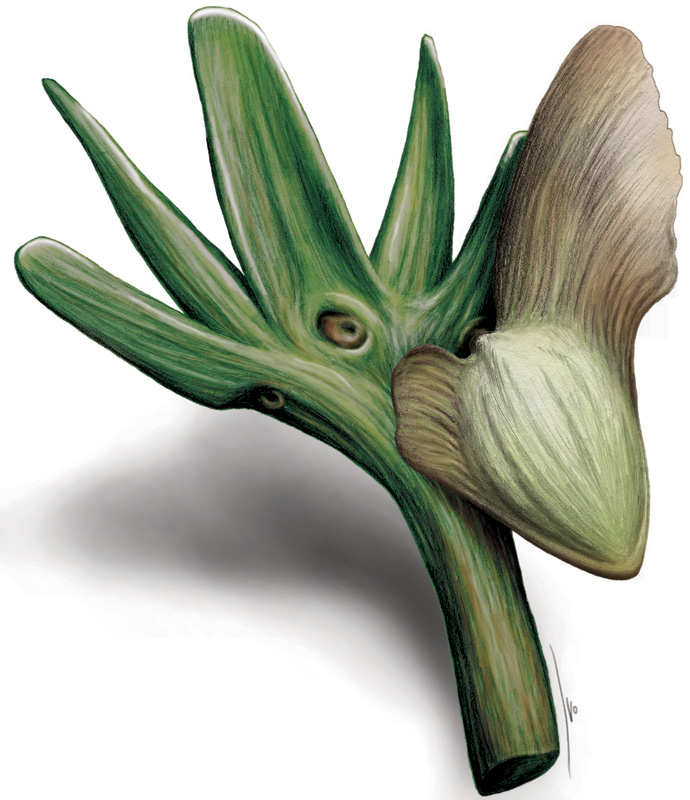Stevenson, Robert A., Dennis Evangelista, and Cindy V. Looy. "When conifers took flight: a biomechanical evaluation of an imperfect evolutionary takeoff." Paleobiology 41.2 (2015): 205-225. [SOURCE]
The whirring helicopter seeds of modern day conifers (as well as a handful of other tree species) are truly marvels of evolution. We humans have yet to top the simple efficiency of this form of locomotion. It is easy to see how such seed anatomy benefits a tree. Instead of plummeting to the ground and struggling under the shade of its parents, winged seeds are often carried great distances by the breeze. Such a dispersal mechanism is so effective that multiple tree lineages have converged on a single asymmetrical wing design of their samaras.
The key to this type of seed dispersal lies in the movement of the seed in the air. The whirring motion allows the seeds to stay airborne as they are carried away from their cones. It would be all too easy to argue that any intermediate must be doomed to failure. However, this is not the case. A rich collection of 270 million year old fossils discovered in Texas is shining light on how at least one lineage of conifers settled in on this wonderful adaptation for seed dispersal.
Instead of producing one type of winged seed, an ancient species of conifer known scientifically as Manifera talaris produced multiple different samara designs. Some were symmetrical, others were double winged, and still others matched what we would readily recognize as a samara today. It would seem that early conifers were “trying out” many different forms of wind dispersed seed designs. Manifera talaris was alive during the early Permian. At that time, there were not many animals alive (that we are aware of) that could function as seed dispersers for conifers. Instead, these early trees relied on the wind to do the work for them.
Though these fossils offer a unique window into the evolution of winged seeds, they do not give any indication as to how each seed designs would have performed. For paleobotanist Dr. Cindy Looy, this meant a chance to have a little fun with science. She and her colleagues built functional paper models of each of the samara types represented in the fossils. By attaching the paper wings to comparably sized seeds from an extant conifer, she was able to test the flight performance of each of these samara types. What she found was quite interesting.
As it turns out, symmetric and asymmetric double-winged seeds performed quite poorly. They fluttered to the ground, barely achieving any rotation. Contrast this with the asymmetric single-winged seeds, which stayed airborne for twice as long as any other samara design. What this research shows is that early conifers were, in a sense, "experimenting" with different samara designs. Those designs that allowed for greater seed dispersal produced more trees that did the same.
Photo Credit: Dr. Cindy Looy
Further Reading: [1]
![Stevenson, Robert A., Dennis Evangelista, and Cindy V. Looy. "When conifers took flight: a biomechanical evaluation of an imperfect evolutionary takeoff." Paleobiology 41.2 (2015): 205-225. [SOURCE]](https://images.squarespace-cdn.com/content/v1/544591e6e4b0135285aeb5b6/1437657301019-XB4EC6SKTUVRMO77C7XN/image.jpg)
